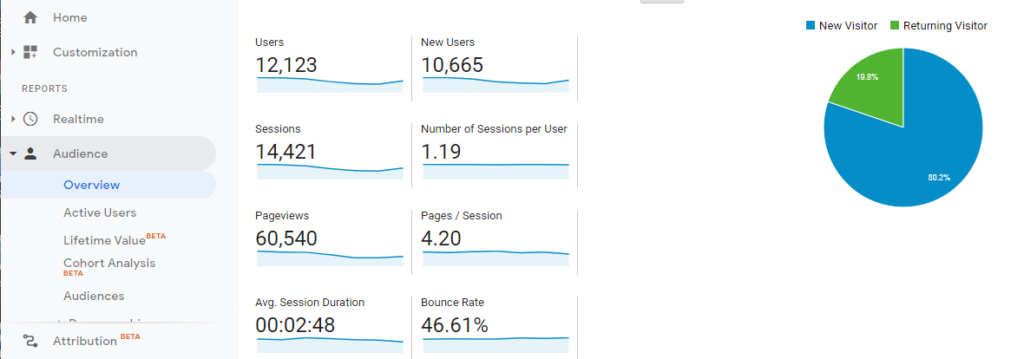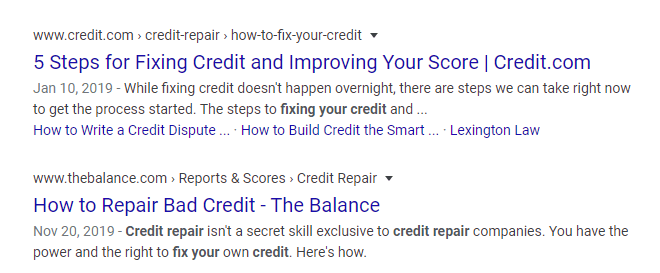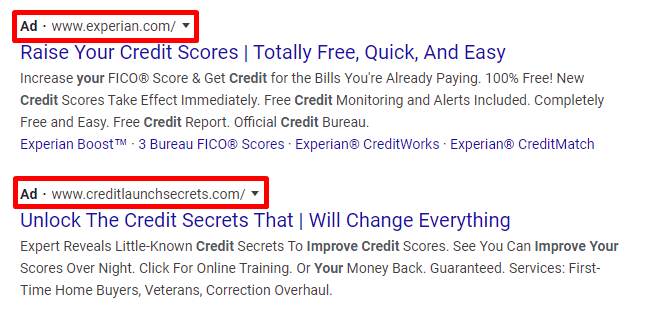-
 9 min. read
9 min. read
-
 Trevin Shirey
Trevin Shirey VP of Marketing
VP of Marketing
- Trevin serves as the VP of Marketing at WebFX. He has worked on over 450 marketing campaigns and has been building websites for over 25 years. His work has been featured by Search Engine Land, USA Today, Fast Company and Inc. Read his review of working with WebFX for the last 15 years.
The best businesses in the market use digital media strategies to make full use of the evolving opportunities that digital media offers. Digital media strategy works well because it’s a holistic approach. It takes a wide variety of digital marketing techniques and methods to create a systematic approach to a predefined end goal.
Ready to find out what is a digital media strategy and what goes into creating one? Keep reading to learn more and subscribe to our newsletter, Revenue Weekly, to stay on top of the latest tips and trends for creating a successful digital media strategy!
What is a digital media strategy?
A digital media strategy — also called a digital marketing strategy, is the practice of marketing your products or services to customers through online, digital mediums. These mediums include:
- Web pages
- Video
- Audio
- Apps
- Emails
- Ebooks
- And more
The most successful digital media marketing campaigns focus on how you can improve your audience’s life or provide a solution to their problem. A strong digital media strategy focuses on building a digital culture around your brand to get people to turn into conversions for your business.
Why does your business need a digital media strategy?
Digital media strategies help you focus on creating value for your customers while retaining a competitive edge in your niche market. These strategies also help you identify who to market to online.
Some of the benefits that come with having a digital media strategy are:
- Relevant targeting: Digital marketing enables you to reach leads most interested in your business. You can target people based on demographics, buying habits, and more. It allows you to reach people that haven’t discovered your business yet and help them learn about your company.
- Building relationships: As a result of your digital media marketing efforts, you’ll build meaningful relationships with your customers, turning them from leads into loyal customers. A good digital media strategy will help you provide a memorable customer experience and keep customers coming back.
- Quick results: With a solid digital marketing strategy in place, you’ll convert customers faster and with greater efficiency. Automated testing and bidding techniques allow you to optimize your strategy so it performs it’s best without requiring you to spend inordinate amounts of time on it.
- Measurability: Digital media strategies are easier to track and measure than most other marketing strategies. It increases your ability to collect data about your customers, as well as identify if you are reaching your goals.

4 easy steps for creating a digital media strategy
A successful digital media strategy takes coordination between different departments within your company, including sales and marketing. You need to work together to ensure you’re meeting your customers’ needs and creating a positive experience with your brand. Check out these four easy steps for getting started with your digital marketing strategy:
1. Set your digital media marketing goals
Your goals help you stay focused on your digital media strategy. If you want to see success with digital marketing, you must determine what you want to achieve with your strategy. Goals depend upon your business’s needs.
Whether you’re looking to gain new leads or earn more conversions, you must think about what your company wants to achieve by investing in a digital marketing strategy. If you’re looking to increase sales, your next digital marketing goal could be raising sales by X%. In short, your marketing goal should align with your business’s overall goals.
Every digital media strategy goal should work towards achieving a larger company goal. Additionally, these goals need to be SMART goals. SMART goals are:
- Specific: Your digital media strategy must aim to achieve a specific goal. A vague goal, like “earn more conversions,” won’t help you know if you’ve reached your goals, but a specific goal like “increase conversions by 20%” states precisely what you want to achieve.
- Measurable: Your goals must also be measurable. A measurable goal is one that you can easily track, such as “increase traffic by 50%.” With a goal like this, you can visibly see how much your traffic increases or decreases over the course of your digital media campaign. When goals are easily measurable, you can identify key metrics and determine how much you’re accomplishing.
- Achievable: Before setting a goal, you need to determine if you have the resources and ability to achieve it. A goal like “increase sales by 50%” may not be achievable for your company and can derail your strategy and discourage the people on your marketing and sales teams.
- Realistic: Similarly to achievable, your goals must be realistic. You might be able to achieve a goal like “increase Facebook likes to 4000,” but if you’re trying to do that within a short amount of time, it may not be realistic for your business. Measurable milestones will help you reach those goals that are more difficult to accomplish.
- Timely: Your goals must have deadlines. With enforced deadlines, your teams will be more motivated to keep your digital media strategy on track. Without a concrete deadline to push your teams to accomplish your goal, your goal runs the risk of falling by the wayside.
SMART goals help you stay focused and know what you’re aiming to achieve.
2. Determine your product’s unique value proposition
Every product and service needs to have something about it that makes it valuable to customers. If you can’t showcase the value, people won’t know why they should buy your product or invest in your services. To identify your product’s value proposition, ask yourself these questions:
What need does my product fulfill?
Customers buy products or use services to solve a problem or to improve their lives.
You must determine how your product or service benefits your customers, so you can showcase the value. Take some time to identify the unique value of your product or service that will address those needs and concerns. Ask questions like:
- What problem is my product solving?
- What does my product do that makes life for my customers better?
- How does my product solve the problem better than my competitors?
- What capital and means do I have to bring that value to customers?
- How can I sustain my product’s unique value?
Where is my business qualified to compete in the business environment?
In other words, what is your niche market? You need to determine which niche your products and services fall into to compete successfully. If you enter into a market that doesn’t fit your products and services, you’ll likely have a hard time making an impact on that niche’s audience, and you won’t be able to out-compete your audience.
Identifying your niche allows you to determine the value of your product compared to your competitors. You can see what you offer that’s better than their product and vice-versa.
3. Identify your target audience
You need to know exactly who you’re marketing to with your products or services. Identify the common points between your customers, and segment them into groups according to their:
- Location
- Age
- Income (occupation)
- Goals
- Needs
- Interests
- And priorities/values
The easiest way to do this is by using customer lists, surveys, and interviews to create representations of your ideal customers (called buyer personas or marketing personas) based on real data, not assumptions.
4. Choose your digital media tactics
After you’ve determined your digital media strategy goals, your product and service’s value proposition, and your target audience, you’ll want to pick the digital media tactics that your overarching digital media strategy will encompass.
- Search engine optimization (SEO): This tactic is to help search engines find and index pages on your website. Search engines will read the content on your pages to determine what the page is about, the benefit is that it will show your page on relevant search pages. When put in place, SEO will drive traffic to your website with little to no money required to make it happen.

- Pay-per-click (PPC) advertising: Similar to SEO, this tactic gets your business in relevant search results and drives traffic to your page. PPC is a paid tactic that requires bidding to get ad placements. When you run a PPC ad, search engines will show your ad at the top of search results, above organic listings, where you can reach more relevant leads.

- Social media marketing: This tactic focuses on expanding your brand awareness to audiences on social media through both consistent posting of content and paid advertisements on the platform. If implemented correctly, social media marketing will build your brand a following, increase your authority and trust, as well as drive traffic and sales.
- Content marketing: Content marketing is the heart of your digital media strategy because each other tactic requires content to function properly. Content marketing allows you to lead potential customers through each stage of the marketing funnel. Content marketing is another tactic that can be done for free.
- Web design: This tactic focuses on improving the user experience (UX) of your website. With it, you can improve the overall design of your website, as well as things like mobile-responsiveness and page load speed, the benefit being that visitors to your site will have a better time interacting with your site, making the conversion process as easy as possible.
- Email marketing: Email marketing focuses on sending relevant, personalized emails to customers that have subscribed to your mailing lists. Email marketing makes it easy to provide a quality experience and relationship with your brand, increasing the number of loyal customers. With email marketing, you can automatically send emails personalized to your customers’ birthdays and important holidays, their product search history, and their preferences and needs.
Digital marketers will mix and match these tactics to create a digital media strategy that best meets the needs of their target audience.
Our digital marketing campaigns impact the metrics that improve your bottom line.
See Our Approach
$10 billion

24 million

7.14 million
WebFX can help you create a result-driving digital media strategy
Ready to start building your digital media strategy? As a full-service digital marketing agency, WebFX develops data-driven digital media strategies to drive real results. Whether you need SEO services, PPC services, social media marketing services, or something else, we have you covered!
— We’ll help you figure out which components will best fit your niche market and digital marketing goals. Contact us online or call us at 888-601-5359 to talk to one of our talented digital marketing specialists!
-
 Trevin serves as the VP of Marketing at WebFX. He has worked on over 450 marketing campaigns and has been building websites for over 25 years. His work has been featured by Search Engine Land, USA Today, Fast Company and Inc. Read his review of working with WebFX for the last 15 years.
Trevin serves as the VP of Marketing at WebFX. He has worked on over 450 marketing campaigns and has been building websites for over 25 years. His work has been featured by Search Engine Land, USA Today, Fast Company and Inc. Read his review of working with WebFX for the last 15 years. -

WebFX is a full-service marketing agency with 1,100+ client reviews and a 4.9-star rating on Clutch! Find out how our expert team and revenue-accelerating tech can drive results for you! Learn more
Try our free Marketing Calculator
Craft a tailored online marketing strategy! Utilize our free Internet marketing calculator for a custom plan based on your location, reach, timeframe, and budget.
Plan Your Marketing Budget

Proven Marketing Strategies

Proven Marketing Strategies
Try our free Marketing Calculator
Craft a tailored online marketing strategy! Utilize our free Internet marketing calculator for a custom plan based on your location, reach, timeframe, and budget.
Plan Your Marketing Budget
What to read next





